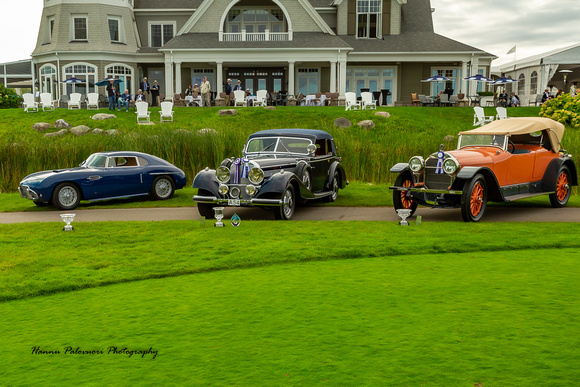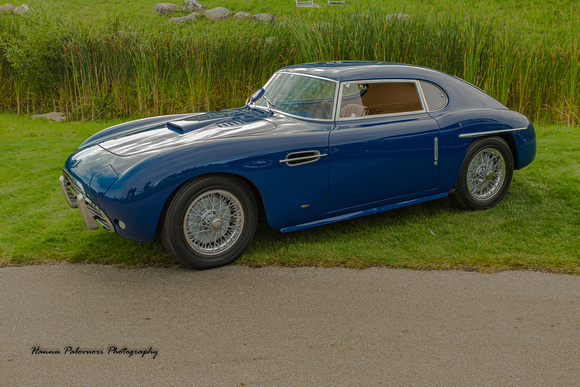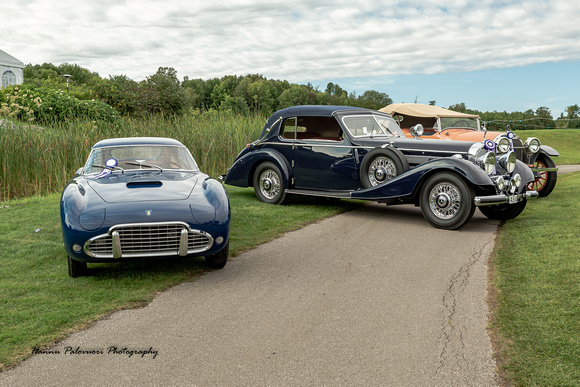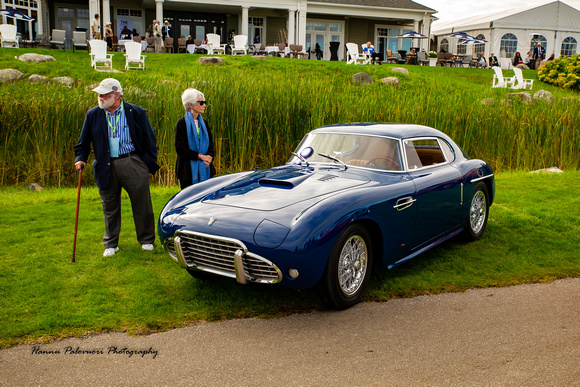1954 Siata 200 CS
As we all know, that due to unfortunate pandemic, most if not every car show for this season has been cancelled. It is sad, that even Cobble Beach Concours d'Elegance has been cancelled for this year. Last year, the top three were as follows: Best of the show - 1938 Mercedes Benz 504K Cariolet, Outstanding Pre-War - 1917 Locomobile 48 Type M Series 7, and the Outstanding Post-War - 1954 Siata 200 CS.


1954 Siata 200 CS
Engine: Fiat Tipo 106, 16–valve, 70-degree OHV V-8, aluminum-alloy block and head.
Displacement: 1,996cc (121.8-cu.in.); Horsepower: 125 @6,600RPM; Torque: 111-lb.ft. @5400PRM; Compression ratio: 8.5:1; Induction: Twin Weber 36 DCF3 two-barrel carburators
Gearbox: Five-speed manual; Brakes: Finned aluminum Alfin drums, hydraulically operated.
Overall length: 160 inches; Overall height: 48 inches; Wheelbase: 96 inches; Curb weight: 2,200 pounds.


Despite being remarkably beautiful, Siata sold just 11 of these Carrozzeria Balbo – bodied coupes. More surprisingly, the total number of Siatas built with the running gear of the Fiat 8V was limited by the very small quantity of 1,996 cc V-8 engines produced by Fiat.
Turin – based like Fiat, Siata had a longstanding relationship with Italy’s largest automobile manufacturer, dating back to its foundation in 1926. The name is an acronym for Societa Italiana Auto Transformazioni Accessori, which basically stands for Italian Car Accessory Company. Siata made a name for itself for hot rodding Fiats, twin carb intakes, alloy high compression cylinder heads, four and five speed gearboxes and even superchargers.
Siata built few prototypes of complete cars with modified drivelines in the 1930’s, including a Zagato – bodied Gran Sport based on the Topolino that won its class at Mille Miglia. Perhaps the Siatas most remembered, though, are those that housed Fiat’s unlikely V-8 engine. Fiat engineers developed the relatively tiny 2.0-liter, overhead-valve V-8 with a narrow, 70-degree angle between the cylinder banks. With a 72 mm bore operating on just 61.3 mm stroke, the oversquare engine was built to rev, and peak power was reportedly measured at 6,000 rpm. With 8.5:1 compression ratio, Weber 36 DFC3 carburators and high-output camshaft, the engine made 125 hp in the top tune.


Beyond the 35 roadsters produced and a handful of prototypes, Siata also built 18 competition coupes, the first seven of which came from Stabilimenti Farina. Upon the coachbuilder’s demise in 1953 Siata turned to Carrozzeria Balbo for the final run of 11.
The dual – carb equipped Siata’s V-8 had only 2,200 pounds to push around, making it quick enough. But 200 CS differed from the 8V as it had its own unique tubular-frame chassis supporting lightweight aluminum body panels. The Siata also has all-independent suspension, with large, finned aluminum brake drums at each corner. The gearbox is based on the four-speed manual from Fiat 1400, Siata added a fifth gear for the competition coupes.
The car featured here, has a rather unique history. It came to U.S. and found itself with a string of racing-inclined owners in its first five years, seeing action from Brooklyn’s Floyd Bennett field to the Keene Mountain Hill climb in the Adirondacks to Thompson Speedway in Connecticut. By 1959, the originally blue Siata 200 CS Coupe had somehow ended up on a used car lot in Queens, New York.


The current owner, Walter Eisenstark, whose father Julius had a penchant for European cars, spotted this Siata at Tri-Color Motors in Brooklyn. He immediately fell in love with it, bought it right away, and the car has been in the family since September 12, 1959. At the time of purchase, car had 19,000 miles on it, of which mane had been very, very hard and driven on the racetrack. The car was mechanically rebuilt during this time period – engine and transmission. In 1966 another rebuild was needed as the engine threw a rod. In order to turn the Siata into a proper GT car, it would need some cosmetic work, as it was bare-bones race car with no creature comforts. During the time from 1959 through the mid Sixties, the car underwent a transformation to an almost luxurious touring car. Additions included a ventilation system, with defroster and a heater, additional cooling capacity, to prevent overheating. The interior was also reworked better to accommodate driver and a passenger. This car is one of the six Balbo Coupes that are accounted for.

